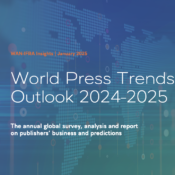
Luxury Branding in the UAE: How Global Brands Leverage the Region’s Prestige to Shine Worldwide
The United Arab Emirates (UAE) has established itself as a global hub for luxury. With its glittering skyscrapers, world-class retail destinations, and affluent populace, the country attracts top-tier brands eager to make a statement. But what sets the UAE apart as a luxury epicenter, and how do global brands use their presence in the region to amplify their prestige worldwide?
The UAE as a Luxury Hub
The UAE, particularly Dubai and Abu Dhabi, is synonymous with opulence. Home to some of the world’s wealthiest individuals, the country offers an unparalleled platform for luxury brands to thrive. The retail landscape includes iconic destinations like The Dubai Mall—the largest mall in the world by total area—and Mall of the Emirates, where high-end brands such as Gucci, Louis Vuitton, and Chanel maintain flagship stores. Moreover, the UAE’s position as a global tourism hotspot attracts millions of visitors annually, many of whom are high-net-worth individuals (HNWIs) seeking exclusive experiences.
Leveraging Iconic Events and Venues
Global brands often align themselves with the UAE’s iconic landmarks and high-profile events to enhance their visibility. For instance, Chanel’s desert-inspired fashion shows or Cartier’s exhibitions at the Louvre Abu Dhabi demonstrate how brands seamlessly integrate local cultural elements into their global campaigns. Similarly, the Burj Khalifa frequently serves as a backdrop for brand launches, with its LED displays showcasing logos and campaigns to millions around the world.
The UAE’s annual events, such as the Dubai Shopping Festival and Abu Dhabi Art, provide additional platforms for luxury brands to connect with discerning consumers. These events not only boost brand visibility but also position the UAE as a focal point for global luxury trends.
Targeting High-Net-Worth Individuals
Luxury brands in the UAE prioritize exclusivity and personalization to cater to HNWIs. Exclusive collections tailored for the Middle Eastern market often incorporate elements like Arabic calligraphy, regional motifs, or unique packaging that resonates with local consumers. For example, Louis Vuitton and Hermès frequently launch limited-edition products that align with Emirati tastes and traditions.
Moreover, brands emphasize experiential retail to elevate the customer journey. Flagship stores in the UAE often feature private salons, bespoke services, and personalized consultations, ensuring a sense of exclusivity that HNWIs value.
Innovative Marketing Strategies
Luxury branding in the UAE extends beyond traditional advertising. Brands are increasingly adopting cutting-edge technologies to create immersive experiences. Virtual and augmented reality (VR/AR) technologies allow consumers to explore collections remotely or design custom products from the comfort of their homes.
Social media also plays a pivotal role in marketing luxury in the UAE. Influencers and celebrities, particularly those with strong ties to the region, are often tapped to promote high-end products. Collaborations with prominent figures, such as Emirati royals or international stars attending events like the Dubai International Film Festival, amplify brand messages globally.
Global Appeal through the UAE Market
The UAE’s reputation as a luxury destination enhances the global appeal of brands operating within its borders. When consumers see brands thriving in such a prestigious market, it reinforces their perception of exclusivity and quality. This phenomenon is especially evident during global events hosted in the UAE, such as Expo 2020 Dubai, where luxury brands showcased their innovation and commitment to excellence.
Additionally, the UAE’s strategic location as a gateway between Europe, Asia, and Africa allows brands to reach diverse markets. By establishing a strong presence in the UAE, luxury brands can effectively tap into neighboring regions and attract affluent consumers from across the globe.
Embracing Emirati Culture and Values
Respecting local culture is paramount for luxury brands operating in the UAE. Ramadan collections, for example, have become a staple, with brands like Dolce & Gabbana and Michael Kors designing modest yet elegant attire for the holy month. Incorporating regional aesthetics and traditions not only appeals to local consumers but also showcases the brand’s cultural sensitivity to a global audience.
Sustainability in Luxury Branding
As sustainability becomes a key focus worldwide, luxury brands in the UAE are incorporating eco-friendly practices into their operations. From green building initiatives in flagship stores to sustainable fashion collections, brands are aligning with the UAE’s broader commitment to environmental responsibility. This approach resonates with eco-conscious consumers and reinforces the perception of luxury as both aspirational and ethical.
Conclusion
Luxury branding in the UAE is a masterclass in blending opulence with cultural relevance and innovation. By leveraging the country’s prestige, iconic landmarks, and affluent consumer base, global brands not only thrive locally but also amplify their appeal on the world stage. The UAE’s unique position as a luxury hub ensures that brands operating in the region continue to set benchmarks for excellence, exclusivity, and innovation.




